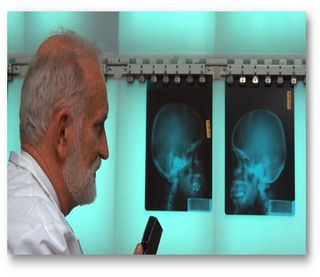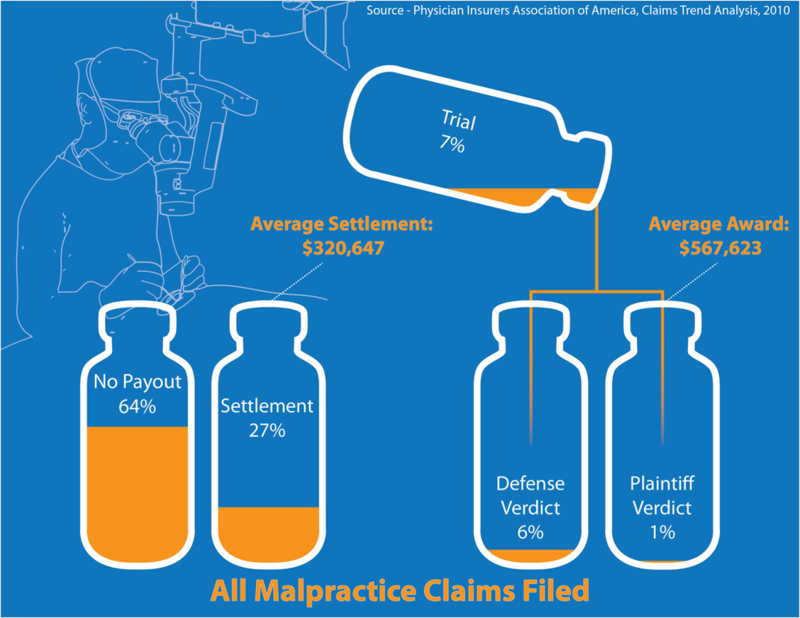By Dr. Ken Broda Bahm –
For doctors, arguably the areas that require the greatest levels of skill and art lie not in treatment, but in diagnosis. The same goes for lawyers. Encyclopedic legal knowledge and impressive oratorical skills are critical, but probably less important in the long run than a clear-eyed ability to assess your case and know the difference between the claim that should settle early and the case that should be fought to the end.
In the medical malpractice arena, for example, new research from the Physicians Insurance Association of America and from a current study in the New England Journal of Medicine shows while all doctors are at relatively high-risk of being sued during their career, the proportion of cases resulting in a payout to a plaintiff is relatively small. The popular image of easy “jackpot justice” in medical malpractice cases is at odds with the data. Of course, some cases do go the distance and result in large payouts. The key skill for attorneys on both sides is the ability to assess. What about a case predicts whether it is or isn’t likely to result in a finding of negligence and a high verdict? This post looks at the new data and addresses that question.
The New Data on Malpractice Claims
Based on the most recent claims trend analysis from the Physicians Insurance Association of America (2010), the disposition of all medical malpractice claims filed breaks down like this.1
The story told by this graphic is that two-thirds of cases result in no payout, with only seven percent of claims going to trial, and a bare one percent resulting in a plaintiff’s jury verdict, with average verdicts and settlement amounts being relatively modest.
This information squares with an even more recent study of claims appearing in the current New England Journal of Medicine (Jena et al., 2011). The researchers looked at claims filed over the past two decades, including data from roughly 41,000 doctors nationwide. The following are the highlights from this study:
- Only one in five malpractice claims against doctors results in a payout to a plaintiff.
- Each year, 7.4 percent (about one in fourteen) doctors is the target of a claim.
- 19 percent of doctors in the most targeted areas (neurosurgeons and thoracic-cardiovascular surgeons) are sued every year.
- 3 percent of doctors in the least targeted areas (pediatricians and psychiatrists) are sued every year.
- Fully 99 percent doctors in high-risk specialties (surgeons, OB-Gyns, cardiologists, etc.) will face a law suit at some point in their career, 88 percent by the time they are 45 years old.
- Even in the “low risk” specialties (family practice, pediatrics, psychiatry, etc.), 75 percent of doctors will at some point in their lives be sued, 36 percent by the time they’re 45 years old.
Implications
The numbers by themselves don’t suggest a strategy. On the doctor’s side, the takeaway is the ubiquity of risk of suits, and on the plaintiff’s side, it is the relatively small chance of recovering money. The key for both is to use this information to take a hard look at cases in order to determine what elements make for a winning case. While that would make for a great quantitative project in follow-up to the Jena et al. study, in our experience there are a few clear factors that predict a more dangerous case for a doctor, or a more promising case for a plaintiff. I call them the “dis’s.” The first is Disappointment, but that describes all cases. Risk managers and everyone who interacts with patients should take note of the fact suits always emerge from disappointment: A gap between between what patient and family expected, and what happened instead. Expectation management is key, but there are three other “dis’s”, when present, can magnify the risk a case faces.
1. Dishonesty. A doctor that provides capable diagnosis and excellent care, but then fudges the records, adding or revising after the fact, is in deep trouble. Nothing breaks the ideal of a trusted doctor-patient relationship (or the parallel doctor-juror relationship) than dishonesty. Dishonesty cuts both ways, since patients that aren’t open and candid with doctors have a problematic case as well.
2. Disrespect. Patients and jurors hold doctors in high esteem, but in return, they expect respect. Any action, comment, or conveyed attitude that communicates disrespect for the patient, the family, or the legal process (including the present trial and the plaintiff’s attorneys) can turn a good doctor into a bad defendant.
3. Disadvantage. A patient’s outcome is viewed in a relative, not an absolute sense. Jurors know bad things happen without someone necessarily being at fault. However, jurors look at what might have been and are convinced negligence occurred by the belief this patient was at a disadvantage. In other words, other patients treated at different times by different physicians in different hospitals would have received different care and a better result.
You’ll note there are three words I haven’t used in describing what makes for a plaintiff-winning malpractice case: Standard of Care. That is what every malpractice case is supposed to be about, and to be fair, jurors will try to follow the instructions. But standard of care is abstract and contested and much easier for the experts to discuss than for a jury to apply.
The case won’t always see a jury. In fact, more than nine times out of ten, it won’t. But the “potential jury” in the form of your assessment of how a typical panel would react, plays a role in every case. Rather than waiting for all of the documents and details to emerge from discovery, it is better to get an early assessment — as early as possible — to help you understand a jury’s likely reaction to the general story. In lawsuits as well, early diagnosis is the key.
______
Related Posts:
- In Malpractice Litigation, Account for Jurors’ Motive to Trust the Doctor
- Settle Your Case Without Setting the Dominoes in Motion: Research on the Demonstration Effect
- The Jury is Out: Make the Most of Your Experience In an Era of Fewer Trials
- Be More Realistic Than Your Opponent
______
 Jena AB, Seabury S, Lakdawalla D, & Chandra A (2011). Malpractice risk according to physician specialty. The New England journal of medicine, 365(7), 629-36 PMID: 21848463
Jena AB, Seabury S, Lakdawalla D, & Chandra A (2011). Malpractice risk according to physician specialty. The New England journal of medicine, 365(7), 629-36 PMID: 21848463
1We received this information from PIAA by mail. To our knowledge, it is not available online.
Photo Credit: Photospin (licensed)

